The Active Desk
Bill Buxton
Created: October 1st, 2009
Last updated: October 2nd, 2009
The Active Desk was an early version of what has
become known as tablet-top or surface computing.
It was an electronic drafting table on which you could use a stylus
directly on the work surface to create and interact with your work.
As can be seen in the photo to the right, the working surface was
about 1 metre diagonal, and like a drafting table, on a slant.
Given the current interest in this class of interaction, the intent of the rest of this page is to capture some of the - not so easy to find - history and background of the Active Desk project. I expect that I will periodically add to this page as I dig up additional material from my archives and elsewhere. As always, suggestions and comments are encouraged.
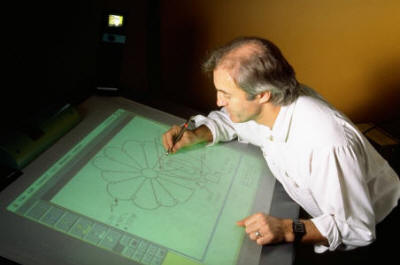
Figure 1: The Active Desk, University of Toronto, 1992
Background
In 1989 I started working 1/2 time at Xerox PARC. Among other things, I worked with Mark Weiser on ubiquitous computing. The other half of my time was spent at the University of Toronto, where I directed two groups, the Ontario Telepresence Project (OTP) and the Input Research Group (IRG). At PARC, I had been exposed to, and worked with, the team that build a large format, rear-projection electronic whiteboard called the Liveboard. One of the things that this experience helped trigger was a desire to see how working on a large surface would change if the form-factor was that of a drafting table rather than a whiteboard. At the same time, my involvement in in the Mediaspace work at PARC and EuroPARC, coupled with that of the OTP, made me especially interested in how this might facilitate design collaboration. This all, coupled with my long-standing interest in input techniques and technologies, laid the foundation for the Active Desk Project.
Description
As stated above, the Active Desk was explicitly developed to be modeled on a traditional drafting table, in size and form factor. The express purpose of its design was to support activities such as drawing.
The first version of the Active Desk was shown at IBM’s CASCON conference in Toronto in November 1992:
http://www.dgp.toronto.edu/tp/news/news04.html
It was developed by my the combined efforts of the two groups that I directed at the University of Toronto (the Ontario Telepresence Project and the Input Research Group), in collaboration with a local industrial design firm, The Arnott Design Group. We at the University did the basic design and all of the technology, and the Arnott Design Group did the detailed design, incorporating those components, and also constructed the prototype.
The surface of the tablet incorporated a flush-mounted Scriptel digitizing tablet. This was used to support high-resolution pen input. This particular tablet was chosen because it was transparent. That enabled us to have all of the benefits (mainly resolution) of a digitizing tablet, and yet still be able to use rear projection - which was the only way at the time that we could get a large display area on which we could work directly with a pen, without shadows. To turn the Scriptel tablet into a rear-projection screen we adhered a layer of velum like material to its surface. By placing this diffuser on the top of the tablet surface, we achieved two benefits. First, we eliminated any parallax in the projected image. What this meant to the user is that the digital ink appeared to flow directly from the tip of the stylus, rather than appear on the other side of the glass (as the case in most pen-based computers even today - due to the use of LCD displays). The second benefit of the velum-like material was the texture that it gave to the drawing surface - a texture familiar to anyone used to working with traditional drawing media.
An Apple II computer was used to drive the display. It's output was projected onto the back of the tablet using a standard overhead projector with an LCD on top. (It has to be remembered that this was in the days when data projectors still cost multiple 10s of thousands of dollars, and LCD panels were just starting to become available in 12”-14” sizes. ). This was simple and crude, but it worked surprisingly well. And, since it was a drafting table at which you could stand when working, there was enough room inside for this pretty awkward projector - so all that the user saw was this beautifully build table (a tribute to the industrial designers that we worked with).
There were a number of projects that used the Active Desk. Some of the first work on graspable or tangible interfaces employed it:
- Fitzmaurice, G.W., Ishii, H. & Buxton, W. (1995). Bricks: Laying the Foundations for Graspable User Interfaces Proceedings of CHI'95, 442-449. [video]
As part of the Ontario Telepresence Project, we did some exploration of using the device for collaborative drawing, where three people in different locations could work on the same drawing, and have inter-personal communication (audio and video) supported by the Hydra units that we had developed:
-
Sellen, A., Buxton, W. & Arnott, J. (1992).Using spatial cues to improve videoconferencing. Proceedings of CHI '92, 651-652. Videotape in CHI '92 Video Proceedings. [video]
In this collaboration investigation, we placed a Hydra unit on the top right and top left corners of the desktop. You can see the right-hand Hydra unit in use in Figures 1 & 3. Notice in Figure 3 how this configuration enables me to keep the people that I am working with in my peripheral vision, and yet keep my entire re work-surface free for drawing.
Another project (unpublished) was done by a student, Yuyan Liu. As illustrated in Figure 4, an overhead camera and custom software tracked the position and orientation of the non-dominant hand, as well as its pose (angle between the thumb and forefinger). By correlating these data with the data being displayed on the screen, users were able to use the non-dominant hand to "grasp" computer-generated objects displayed on the desk's surface. Coupled with input with the stylus in the non-dominant hand, the system was able to support bimanual touch/gesture + stylus interaction.
The interest generated by the second version of the Active Desk was sufficient for the Arnott Design Group to spin-off a company to develop a production version (I had no part in this company.) The company, founded in 1995, was called ITI (Interactive Technologies, Inc.) and they named the product the VisionMaker Digital Desk. It was launched in April 1996. This version was a refined version of the second generation unit that they had built for us at Alias Research. The unit was metal rather than wood, and had better optics, etc. than the prototype. They also worked with Calcomp to get a better stylus/tablet (the Scriptel did not support pressure and had too much travel in the tip switch.
The VisionMaker had some strong fans, especially in automotive design and architectural studios, as well as some university labs (MIT Media Lab and Cornell, for example). However, it was expensive, and size of the market that could benefit from such a device at the time was small. Furthermore, there were technological issues. Data projectors at that time were big, expensive, and very hard to calibrate. And, nearly all of the software available at the time was targeted for mouse and keyboard - and that was not the style of interaction that the desk was suited for. There is no good place for a keyboard, and trying to use a stylus with an application intended for a multi-button mouse is an exercise in frustration. Some of these are issues that have held back the adoption of the Tablet-PC, even today. So imagine what it was like in 1995 with this device and the technologies at the time. So, for these and other reasons, ITI folded.
ITI's assets were acquired by Fakespace Systems, who then added the VisionMaker to their ImmersaDesk product line. In this, the Active Desk joined a family of technologies that had followed a path parallel to its own, since the original ImmersaDesk (under whose name what had been the VisionMaker was now branded) had started life in 1994 at the Electronic Visualization Laboratory (EVL) at the University of Chicago. Fakespace Systems was then absorbed into a larger congolmerate of companies, called Mechdyne, and with that came the end of what had been the Active Desk.
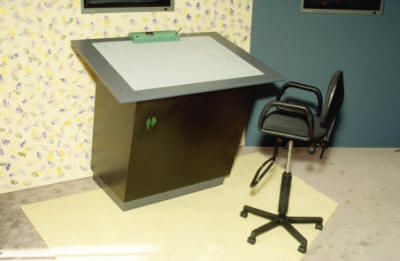
Figure 2: The Active Desk at Cascon, Toronto, November 1992
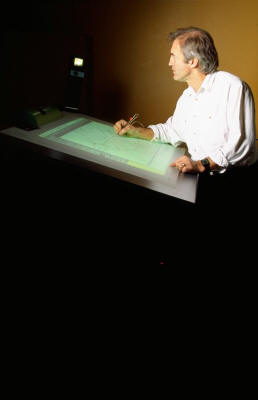
Figure 3: Supporting Collaborative Drawing with Video 1992
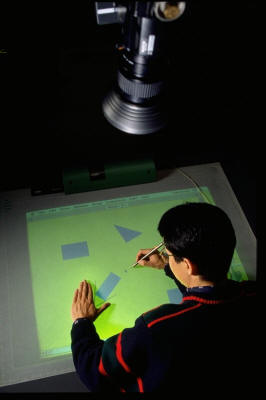
Figure 4: Using stylus + optically captured hand pose, position and gesture to support two-handed input.
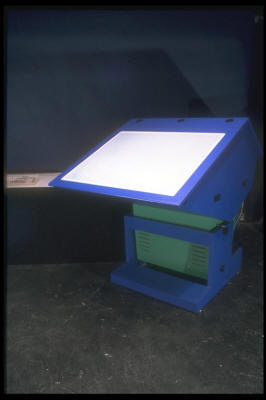
Figure 5: Second Generation Active Desk, 1995
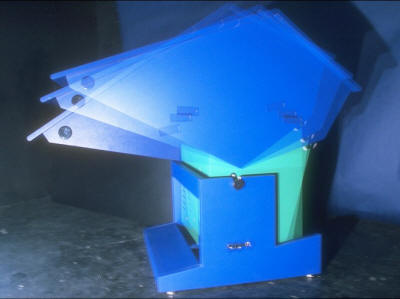
Figure 6: Tilt Capability Illustrated